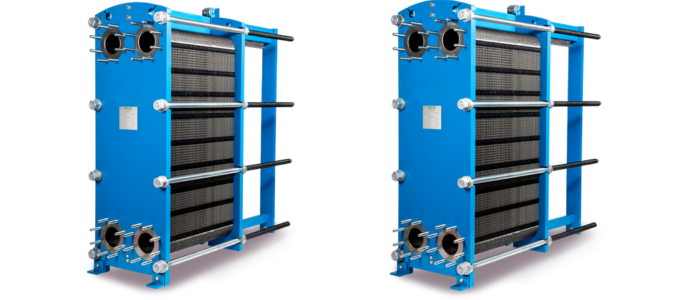In today’s energy-conscious world, heat exchangers are essential for optimizing thermal energy transfer while maintaining fluid separation. Among the different types available, plate and frame heat exchangers stand out due to their high efficiency, space-saving design, and adaptability. This article explores their design, operation, advantages, and real-world applications in depth.
What Is a Plate and Frame Heat Exchanger?
A plate and frame heat exchanger (PHE) is a highly effective heat transfer system that uses a series of thin, corrugated metal plates—commonly stainless steel—to form separate channels for two fluids. These channels allow heat to move from one fluid to another efficiently, while gaskets prevent the fluids from coming into contact.
Each plate is carefully engineered to create turbulence, which enhances the heat transfer rate while reducing the risk of fouling or scale buildup.
How Plate and Frame Heat Exchangers Operate
Alternating Flow Paths
- Hot and cold fluids are introduced into alternating channels created by the stacked plates.
- The corrugated surface of the plates disturbs the flow, creating turbulence that boosts heat transfer efficiency.
Common Flow Configurations
- Counterflow: Fluids move in opposite directions, maximizing temperature differential and efficiency.
- Parallel flow: Fluids flow in the same direction, often used for milder thermal exchange requirements.
Role of Gaskets
Gaskets serve two critical roles:
- Sealing the channels to avoid leakage or cross-contamination.
- Routing each fluid through its designated flow path.
Material selection (EPDM, NBR, Viton, etc.) depends on the fluid’s chemistry, pressure, and temperature demands.
Key Benefits of Plate and Frame Heat Exchangers
Space-Saving Design:
- Their high surface area-to-volume ratio allows for maximum efficiency within a compact footprint.
- Ideal for facilities where space constraints are a concern.
Scalability & Customization:
- The modular design enables adding or removing plates to adjust capacity based on thermal load requirements.
- Adaptable to various applications, from small-scale systems to industrial-scale operations.
Energy Efficiency & Cost Savings:
- The high heat transfer rates result in lower energy consumption, reducing operational costs.
- Enhanced thermal performance allows businesses to optimize energy usage.
Easy Maintenance & Cleaning:
- Disassembly and reassembly are straightforward, allowing for easy cleaning, maintenance, and repairs.
- Ideal for industries that require frequent sanitization (e.g., food processing, pharmaceuticals).
Versatile Applications:
- Suitable for handling a variety of fluids, including water, chemicals, refrigerants, and oils.
- Functions effectively in high-pressure and high-temperature environments.
Real-World Applications
Plate and frame heat exchangers are relied on across industries due to their versatility and high performance:
- HVAC: Ideal for heating, cooling, and energy recovery in modern buildings.
- Food & Beverage: Used in pasteurization and sterilization where sanitary conditions are non-negotiable.
- Chemicals: Help maintain temperature control in reaction tanks or distillation columns.
- Refrigeration: Support high-efficiency cooling in commercial and industrial refrigeration systems.
- Renewable Energy: Essential in solar thermal systems and waste heat recovery setups.
- Oil & Gas: Deployed in refining and processing to maintain fluid temperature and efficiency.
- Pharma & Biotech: Provide precise temperature management in drug formulation and fermentation.
Why Choose Plate and Frame Heat Exchangers?
Whether you’re optimizing your HVAC performance or handling high-temperature fluids in an industrial setup, plate and frame heat exchangers offer:
- Exceptional heat transfer rates
- Compact, efficient design
- Unmatched flexibility in scaling and customization
- Ease of inspection and maintenance

